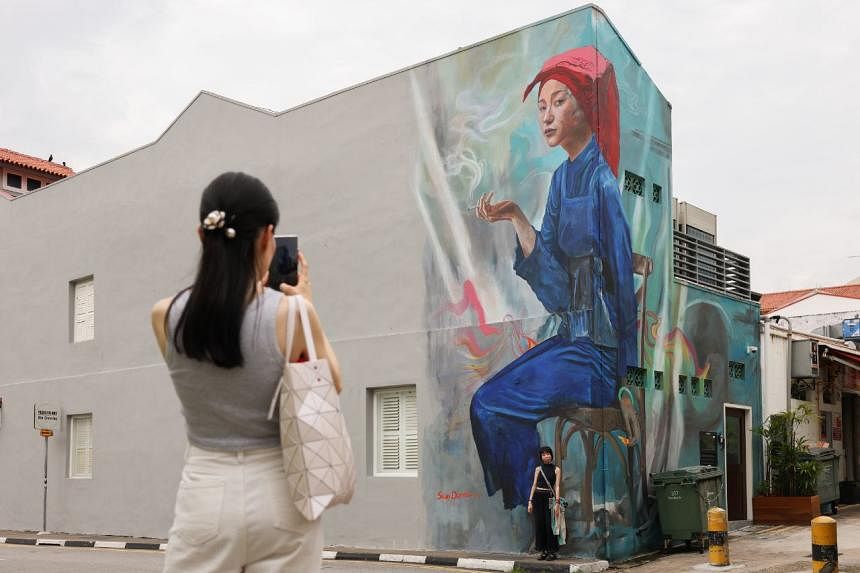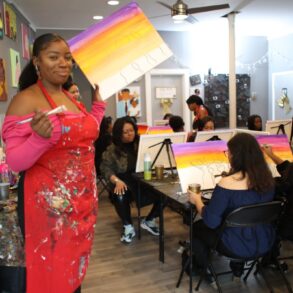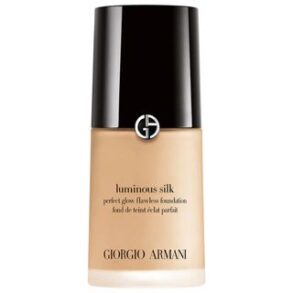
SINGAPORE – An order by the Urban Redevelopment Authority (URA) to erase a cigarette from a Chinatown mural has sparked discussion online about public complaints and the censorship of street art.
The mural, which depicts a young samsui woman holding a smoking cigarette, was completed in early April on the exterior of 297 South Bridge Road. The URA subsequently told the landlord in an e-mail dated May 8 that the mural is “not aligned with Singapore’s anti-smoking policy stance”, according to a spokesperson from Shepherd Asset Management, who represents the landlord.
In a later e-mail seen by The Straits Times dated June 18, the URA also cited feedback from an unnamed member of the public that the woman depicted “looks more like a prostitute than a hard-working samsui woman” and was “offensive”.
The URA in the e-mail requested a “revised proposal” by July 3, and a failure to do so “will be taken into consideration for any application for the renewal” of the building’s temporary permit for the restaurant. The said restaurant is Ya Kun Kaya Toast, whose Temporary Permission expires on July 27.
The mural’s artist Sean Dunston, 50, an American citizen based in Singapore since 2009, told ST over a phone call that the authorities should “try to find a little more balance”, as censoring the work outright was “too rigid and too draconian”.
Dunston took to Instagram to share about the incident, and his post has since garnered over 1,300 likes and more than 110 comments mostly in support of the artist.
It is well-documented that samsui women smoked cigarettes as a form of recreation after their hard labour and even stored cigarettes under their trademark red headgear. South Bridge Road was where many of these pioneering migrant women from Guangdong province stayed.
“Normally, samsui women are portrayed as old women – but when they came to Singapore, they were young and you don’t really see that kind of depiction. I thought it would be nice to change it up to show a younger woman and catch them in a situation when they were not working,” says Dunston of his artistic vision to render the strength and beauty of the samsui women.
“It’s kind of suppressing the potential of Singapore’s art and it’s a bummer,” he adds. “The people who make these rules are afraid of offending people or sending the wrong message to kids – and I do understand that – but sometimes you can’t avoid it when you are talking about certain subjects and talking about a historical subject.”
As to the charge that the woman depicted looked like a prostitute, Dunston dismissed the reaction as “ridiculous”. “There are people being offended by everything all the time,” he says, adding that the authorities’ response to the public complaint had been “knee-jerk”.
Singaporean writer Cheyenne Alexandria Phillips, a licensed tour guide since 2020 who conducts tours in Chinatown every week, concurs that removing the cigarette would be a shame. The mural, she adds, would have been a good talking point for tourists to illustrate Singapore’s history.
The 30-year-old, who has seen this mural go up over months, says that passers-by should look beyond the cigarette. “I think it’s more than the cigarette – but the impact of the image. She’s in a quiet, intimate space and having a moment to herself in the way she knows how.”
Ms Phillips also questions if public complaints are given too much weight in censorship decisions. “With the recent cancellation of the Science Centre lecture and now with this, I think about the power of complaint. How is it that different mediums can be censored or silenced because it isn’t to someone’s taste?”
On June 2, Science Centre Singapore announced that it had cancelled an event organised to discuss the differences between sex and gender following public criticism.
Shepherd Asset’s spokesperson says it had not applied for prior approval for the mural design from the URA, but made a submission on April 19. A request from the authorities to resubmit a proposal by May 22 was also not met.
Murals on conserved shophouses have to be approved by the URA, which said in guidelines on its website that “murals have to be appropriate to the character of the area”.
“We are heartbroken by the URA’s stance and we hope to keep the mural in its current form, but we respect and will comply with URA’s decision,” says the spokesperson. Ahead of the URA’s July 3 deadline, Dunston is scrambling for ideas to modify the mural and hopes it can still convey the spirit of the original work.
ST has contacted the URA for comments.







